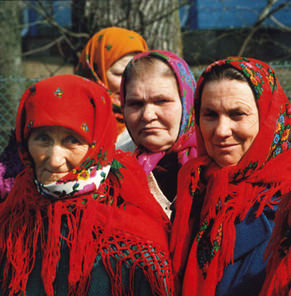Dernières publications
Ethical Considerations on the Empowerment of People living in Contaminated Areas after a Nuclear Accident?
- Détails
- Catégorie : Communications
- Publication : mardi 10 octobre 2017 14:14
ROLLINGER F. – SCHNEIDER T.
ERPW - 2nd European Radiological Protection Research Week.
10-12 October 2017, Paris.
Abstract
Fukushima as previously Chernobyl highlighted the importance of involving the population with the support of national and local authorities and experts to ensure the effectiveness and sustainability of protection actions in contaminated territories.
The empowerment of inhabitants is a key factor for the success of this involvement but is strongly questioned. That leads to important ethical questions such as: is this a strategy to let inhabitants alone to face the post-accident situation and for authorities and experts to be relieved of their responsibilities?
After the Chernobyl and Fukushima accidents, stakeholder involvement processes have been implemented in a few com- munities in Belarus, Norway and Japan. In this context, the availability of measurements devices for the inhabitants is crucial to allow them to assess their own radiological situation. Measurements allow to make radioactivity visible and to talk about it with others. Progressively people build their own reference and regain power to make choices and to retrieve control on their daily-life. One of the major lessons is the following: to protect ef ciently the inhabitants living in contaminated areas, experts must work in cooperation with the local actors and develop together a co-expertise process.
But helping people to protect themselves does not mean that authorities and experts have no responsibilities and call for strong ethical principles; rst of all is the refusal to take decision for the people about their future. To be helpful, scientists need to understand that, as necessary as radiation protection is, it is not the only issue inhabitants are facing and it cannot handle people’s lives. Radiation protection experts must commit themselves to be at the service of individuals and the community and the issues they want to address.
It’s the responsibility of authorities and experts to implement the conditions based on a governance involving the inhabitants allowing respect of freedom and justice. They have also the duty to address collective challenges such as ensuring equity between individuals and communities.
This paper will discuss the ethical considerations to be ad- dressed by experts and authorities in the empowerment process for people living in contaminated areas after a nuclear accident.
A focus will be done on the questions raised on the current process of lifting the evacuation orders after the Fukushima accident.
(A1298)

 Le Centre d’étude sur l’Évaluation de la Protection dans le domaine Nucléaire (CEPN) est une association à but non lucratif, fondée en 1976, pour évaluer la protection de l’Homme contre les dangers des rayonnements ionisants, sous ses aspects techniques, sanitaires, économiques et sociaux.
Le Centre d’étude sur l’Évaluation de la Protection dans le domaine Nucléaire (CEPN) est une association à but non lucratif, fondée en 1976, pour évaluer la protection de l’Homme contre les dangers des rayonnements ionisants, sous ses aspects techniques, sanitaires, économiques et sociaux.
